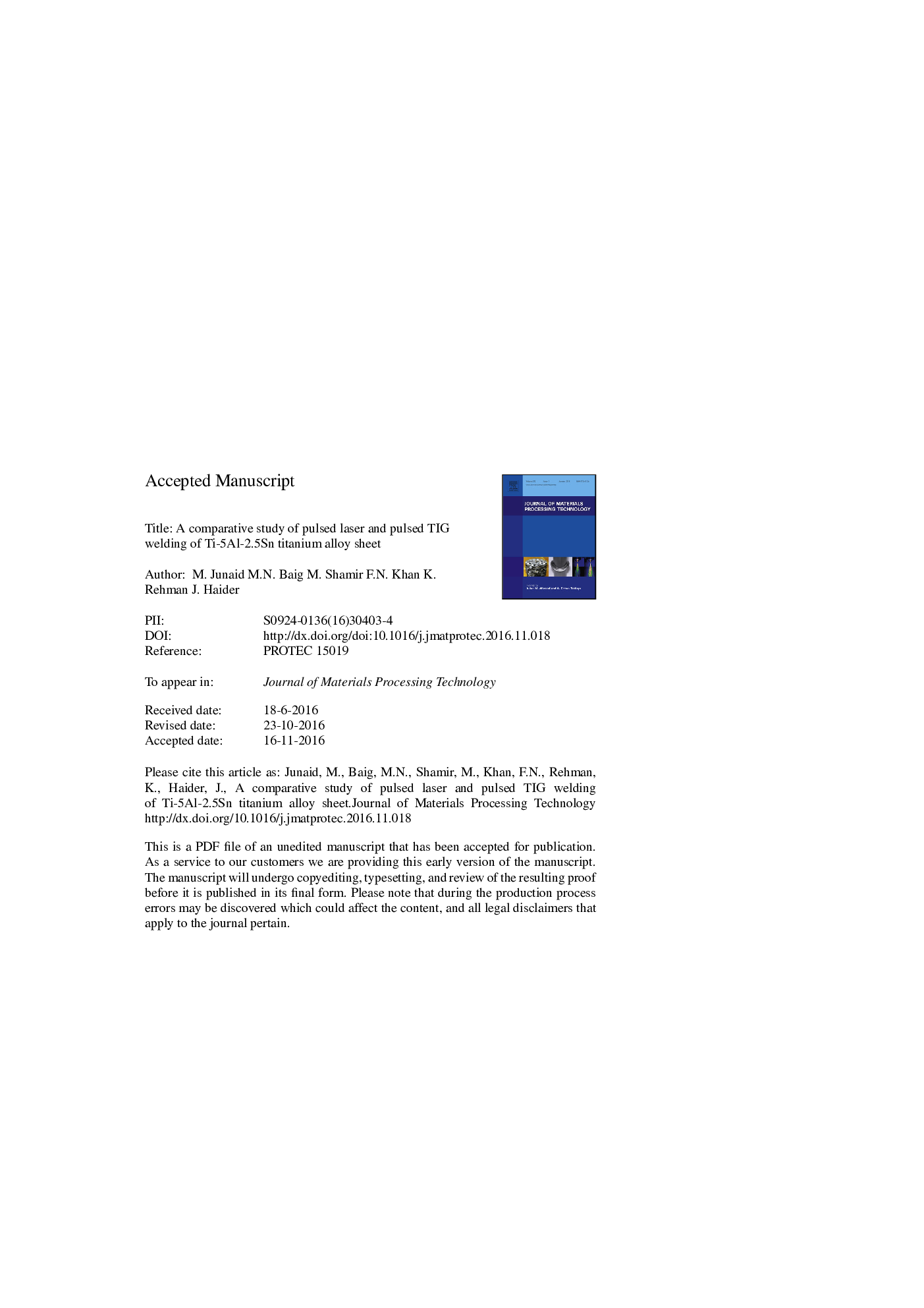| Article ID | Journal | Published Year | Pages | File Type |
|---|---|---|---|---|
| 5017800 | Journal of Materials Processing Technology | 2017 | 54 Pages |
Abstract
Pulsed Nd:YAG laser beam welding (P-LBW) and pulsed tungsten inert gas (P-TIG) welding were used to prepare full penetration bead-on-plate weldments of 1.6 mm thick Ti-5Al-2.5Sn alpha titanium alloy sheet. The influence of welding phenomenon on the microstructure, micro-hardness, tensile properties, surface and sub-surface residual stress distribution and deformation and distortion of both the weldments were studied. Higher cooling rate in P-LBW resulted in complete α' martensitic transformation in fusion zone whereas in P-TIG weldment α' and acicular α was formed within equiaxed β matrix due to lower cooling rate. Hardness in fusion zone of P-LBW was higher than that of the fusion zone of P-TIG weldment due to faster cooling rate in P-LBW. The welded zone in both the weldments showed higher hardness and strength than that of the parent metal since a ductile fracture occurred in the un-welded section during tensile testing. Residual stresses in both P-LBW and P-TIG weldments showed similar trend but the distribution was much narrower in P-LBW due to less width of heat affected zone. P-LBW resulted in more nonuniformity in through thickness stress profile because of greater top to bottom width ratio. Less residual stresses, deformation and distortion and superior mechanical properties in P-LBW made the process more feasible than P-TIG for the welding of Ti-5Al-2.5Sn alloy sheet.
Related Topics
Physical Sciences and Engineering
Engineering
Industrial and Manufacturing Engineering
Authors
M. Junaid, M.N. Baig, M. Shamir, F.N. Khan, K. Rehman, J. Haider,
